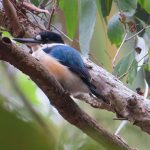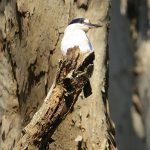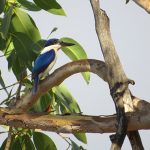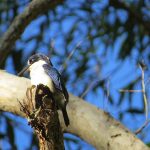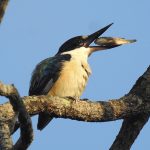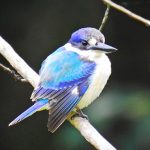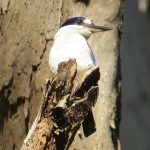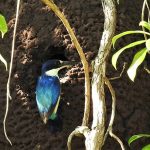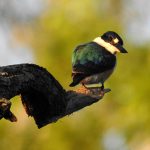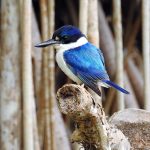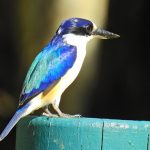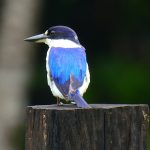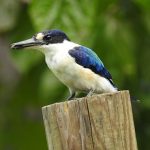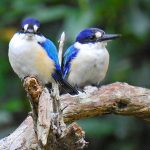FOREST KINGFISHER
The Forest Kingfisher Blue Kingfisher, is a species of kingfisher bird native to Australia.
It is found throughout mainland Australia, except for the arid central regions. It typically inhabits woodlands, forests, mangroves, and coastal areas.
The Forest Kingfisher is a medium-sized bird, measuring around 23 to 26 cm in length. Both males and females have a similar appearance, with bright turquoise-blue plumage on their heads, backs, and wings, and a white underbelly. The bill is black, and they have a black eye stripe.
Like other kingfishers, the Forest Kingfisher feeds primarily on small fish, insects, crustaceans, and amphibians. It perches on a branch or wire, then dives into the water to catch its prey.
The Forest Kingfisher constructs its nest in tree hollows, usually high above the ground. The female lays a clutch of 2 to 4 white eggs, and both parents take turns incubating them. After hatching, the chicks are cared for by both parents and leave the nest after about three weeks.
The call of the Forest Kingfisher is a loud, high-pitched “kee-kee-kee” or “koo-koo-koo” sound, often repeated in a rapid sequence. The call is particularly prominent during breeding season or when the bird is alarmed.
The Forest Kingfisher is known to be a migratory bird. It breeds in northern and eastern Australia and migrates to the southern regions or even parts of New Guinea during the winter months.
The Forest Kingfisher is not currently listed as a threatened species. However, habitat loss and degradation can have an impact on their population, as they rely on specific types of woodlands and forests for nesting and foraging.
As predators, Forest Kingfishers help control populations of small aquatic creatures and insects in their habitats. They play a role in maintaining the balance of the ecosystems they inhabit.

